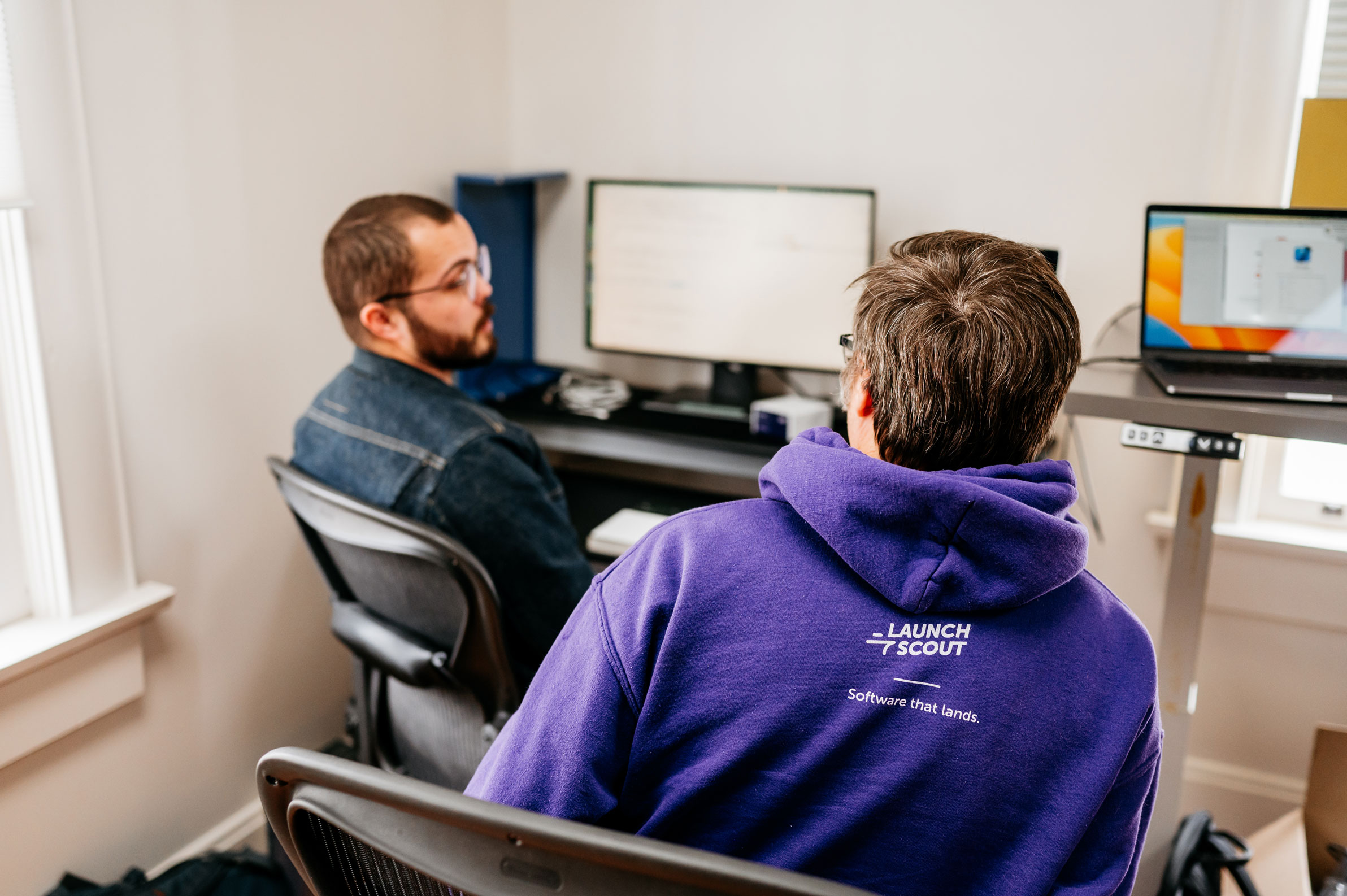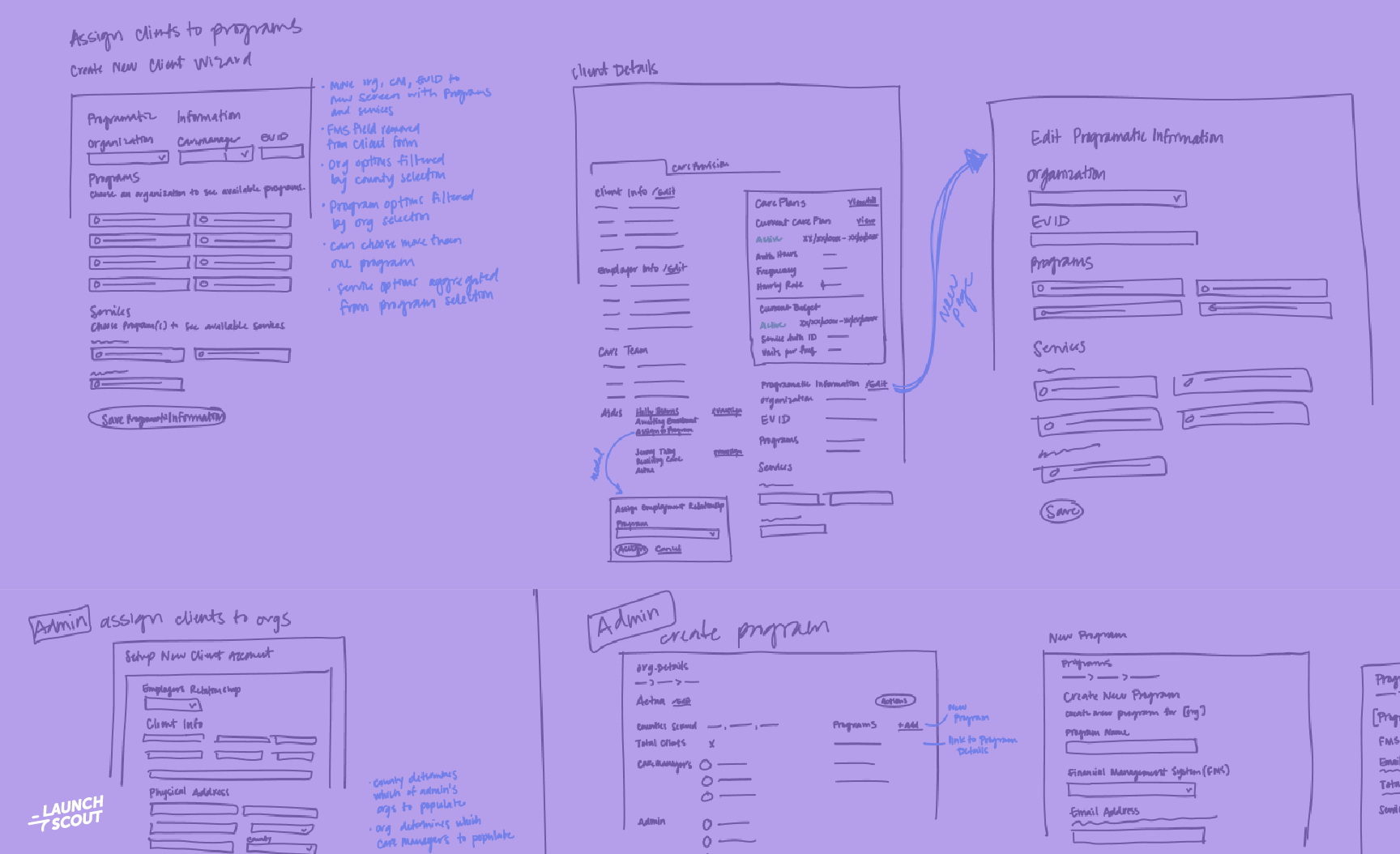5 April 2016
New Hire Checklist: How We Took Employee Onboarding From an F to an A
Over the past six years, we’ve put a lot of time, energy, and money into creating a place people want to be. When you strip it all way, Gaslight is its people. Extremely talented, caring people. We’ve been fortunate to have so many quality professionals join us, but it became painfully clear last year that we were failing in one of the most important areas of serving people well: employee onboarding.
If you read the horror stories on the interwebs about people’s onboarding experiences, you would probably cringe. But it’s easy to point fingers at other companies and say, “Wow, you really suck!” You had better see what’s going on in your own house and with your own new hire checklist (you have one of those, right?) before you do.
Growing pains
We’re a small 27-person company, and something interesting happens when you surpass 20 people. One is that you need to add more process around how you hire and onboard new employees. Last summer we hired a really talented designer, and thankfully, he’s still with us despite the rocky onboarding experience I’m about to describe. See if this sounds familiar:
We have a desk, Thunderbolt display, keyboards, and Kindle ready for his first day. Oh yeah, he had a chair, too. No one was assigned to meet him when he arrived that morning. I didn’t talk to him until almost lunch time (I was busy, of course). No office orientation. He barely had access to the systems we use each day to get our jobs done. I could go on, but you get the picture.
It was a mess! Three months later he was still asking about access to certain systems or having issues finding answers to questions. We really failed him. Thankfully, he’s an understanding person, and we’ve made those things better over time. But from my perspective, it doesn’t matter. If we’re an organization that truly values people, and our goal is to serve one another the best way we can, there is no excuse for this. Unfortunately, this wasn’t the only example, and I was feeling pretty bad about it. All this spurred me to find out how to do employee onboarding well.
Truth be told, I’d love to have ticker tape parades, limousines, etc., for new employees, but we’re small and have limited resources. So I really needed to make practical changes. What could we do with what we have to make substantial improvements?
Talking to others is almost always the right thing do
The first thing I did was to talk with friends at other companies about what they love about their onboarding programs. I also flew down to Jacksonville, Florida, to meet with a new friend I had made at a conference last year. Jessie Shternshus is the owner of Improv Effect and one of the things she does is help companies create amazing employee experiences. I only had the budget to spend one day talking and planning with her, but what I learned has had a tremendous affect.
From 0 to 10
Have you ever asked your new team members this question: “If our onboarding program was a product you bought off a shelf, how likely would you be to recommend this product to your friends on a scale from 0 to 10?” This is commonly known as a Net Promoter Score (NPS). The answer might surprise you, for better or worse. In our case, I just assumed it was a 0 because I knew it wasn’t a 10.
Using what I learned from meeting with other like minded companies and my time with Jessie, we came up with something that marked a significant step forward in onboarding new people at Gaslight. In fact, our new hires in Q4 2015 that went through our new program both gave me an NPS score of 10! What did we do to go from 0 to 10? I’m glad you asked!
We fear the unknown. So remove the unknown.
The thing about human beings is that we are as different as we are the same. We each have unique value to offer to the world, but we all share similar propensities, especially fears. Much fear, even if it’s unwarranted, is driven by the unknown. It’s natural to have anxiety over what is going to happen next. There are varying degrees of this fear from person to person, but at some level, we share an understanding here. This is the place I wanted to start with employee onboarding.
Looking for work is hard. In fact, the whole process can really be hard on your self esteem at times. Interviewing is nerve racking, especially if you’re going after a job you really want. However, there’s no greater potential for anxiety than your first day on the job. You’ve met a few people during the interview process. Perhaps you’ve received an office tour, but beyond that, the landscape is completely new. New office, new people, new work, new schedule, new routine. Yikes! I decided the most important thing I could do as a hiring manager was to remove as much of this anxiety as I could, as quickly as possible. If something is unknown, then let’s make it known.
Here’s what’s going to happen
Our goals for onboarding are fairly simple:
- Remove as much fear and anxiety as quickly as possible.
- Introduce the new person to Gaslight as a whole (general onboarding).
- Set out a path to get the new person up to speed in his or her role (role specific onboarding).
In thinking through the process, we can do all these things well if we lay out a plan and inform the new person before it happens. Remove as many unknowns as we can. Here’s how our new hire checklist works:
Once we have an accepted offer and we have a start date for a new employee, we send them a welcome email. The voice of this email is fun and is actually written from the perspective of the most awesome, welcoming airline attendant you can imagine. Welcome aboard!
In this email, the new hire is introduced to our office manager (the person sending this email), and the person who will be his or her culture buddy. The culture buddy we assign is likely to be one of the people that was involved in the interview process. Keeping things familiar is important. In addition, the welcome email lays out things like:
- What time to be at our office on the start date.
- The full agenda for the first two days, including what we’ll be doing and at what times.
- A brief introduction to what the individual’s role specific onboarding will look like over the next several weeks.
- Confirmation of the person’s contact information, as well as key contacts at Gaslight.
- What documentation to bring on the first day.
- We also provide the new hire information on our benefit options to give him or her time to review prior to the first day.
- Information on choosing equipment, such as a laptop.
We want to make sure that each of us are ready when the start day is here. It should be clear to the new person when to be at our office and what to expect. The fun begins on Day 1!
Welcome … we really mean it! Welcome!!
In our building, when the elevator opens, you walk immediately into our greeting area. This area is furnished with couches, chairs, tables, and lots of plants. If the new person is scheduled to arrive at our office at 9 a.m., the assigned culture buddy and I are waiting. We want the new hire to see us the first thing off the elevator. The new person knows us from the interview process, and it’s our first opportunity to remove the unknowns. The next 30 minutes are key to setting the tone for the rest of the day and week.
We grab coffee, tea, water, or whatever is fancied, and we sit on the couches and talk. The conversation is intended to be laid back and friendly. The culture buddy knows that we’re trying to help this new person feel as welcome and comfortable as we can. At some point during the conversation, I reinforce what was in the welcome email. I go over the agenda for the day, and I inform them that we have a cross section of the company that would like to take them to lunch. We intentionally recruit people from different roles at Gaslight, designers, developers, staff, etc., to take our new friend to lunch. The purpose is to introduce them to the awesome people at Gaslight as quickly as possible and to introduce our newest team member to our existing team.
Once they know what to expect for the day, we get started!
Day 1: No running please
Day 1 is the hardest day for any new person, so it’s important to make sure that the pace of the day is consistent with our goals. We want to introduce our new friend to being a part of our team but avoid the firehose (and podiums). There’s so much to force into a new person’s brain, right? We have to get them up to speed as quickly as possible. Time is money. This is all true, but I’ll take quality over quantity almost every time.
Day 1 of our onboarding process looks something like this:
9:00 - Welcome!
9:30 - Office tour and getting to know us
12:00 - Welcome lunch
1:30 - Personal time: Use this time to catch your breath!
2:30 - Paperwork/questions
4:00 - End of day touch base
End of Day 1: We did a lot! Time to go home.
After the 30 minute welcome meeting, the hiring manager and culture buddy take the new person on a more in-depth office tour. We want to cover basics: Where’s the bathroom? How about the kitchen? Can I eat all these awesome snacks? As we walk the office, we take opportunities to introduce the new hire to other people as we go. Again, removing as many unknowns as we can.
The getting to know us part of the agenda takes a couple of hours, and we have a conversations around:
- History of the company
- Overview of current work and clients
- Open discussion about core values
- Vision/structure/how we work
I particularly enjoy the core values discussion. In future iterations of our onboarding program, I want to develop experiential exercises that reinforce our core values, but for now, we opt for an open discussion of why we settled on these values and how each of us see these values affecting what we do every day. I also spend some time discussing our company vision, the structure (accountability), and a very high level overview of how we work. The goal here is not to overload with information. It will take a long while for a new person to fully understand and embrace all of these things. All we want to do here is to plant the seeds and remove some unknowns.
At noon, we introduce the new hire to a few lunch buddies and send them off to a nice lunch. I intentionally leave out the hiring manager. The hire/fire person can still cause some anxiety. I want them to eat lunch and get to know people in a casual setting and remove barriers to starting relationships. Gaslight pays for lunch for everyone.
After lunch, we decided that giving the new person some time to catch his or her breath is important. In other words, a lot has happened since 9 a.m., and now it’s time to slow down and allow what you’ve experienced to sink in a little. At this time, the new person can get familiar with his or her desk and computer, answer emails, roam the office, take a nap, whatever it is they’d like to do. Remember, we’re still walking; no running.
About 2:30 in the afternoon, our office manager will come around with the employment paperwork that needs completed. This is boring but required. We intentionally leave this to the afternoon of Day 1. It’s important, but not the most important thing. The last thing I want to do is make a first impression with IRS documents. I mean, really!
Then about 4:00, hopefully all the paper filling out is done, and we meet again at the comfy couches to decompress the day. I ask questions like: How was your first day? How was lunch? How do you feel? I’m looking for indicators for how well we served this person. The schedule also intentionally ends the day early. First days are hard, mentally and emotionally. So, go home early. Let it all sink in. Get some rest, and we’ll see you at 9:00 tomorrow.
Day 2: Getting from here to there
Day 2 begins a gradual shift from general onboarding to role specific onboarding. The day looks something like this:
9:00 - Good morning, we’re glad you came back!
9:30 - How we get things done: tools and resources
12:00 - Lunch with CEO
1:30 - Destination: learning path
4:00 - End of day touch base
End of Day 2: Get some rest, the real work starts tomorrow!
We meet again at the comfy couches at 9:00 to drink some coffee, tea, etc., and talk about how the new hire feels now Day 1 is over and there’s been some time to reflect. It’s during these discussions that I’m looking for comments and feedback about where we can improve or help.
Once we feel sufficiently caffeinated, we move into the real tactical things. We introduce the new person to the tools and resources we use to get our work done and communicate, and we make sure he or she has access to all of these things. We also introduce the person to our employee handbook and make sure that when questions come up, they have a good idea of where to find the answers.
The culture buddy is key in all of this. This person remains the culture buddy until it’s no longer relevant. That could be weeks or months. It doesn’t matter. If you, as a new person, need help or have questions, your culture buddy is there to help.
Lunch on Day 2 is also provided and pre-scheduled with our CEO. As a practice, our CEO does periodic one-to-ones as part of our coaching process at Gaslight. This is actually the new hire’s first one-to-one with our CEO. It’s extremely important to begin this relationship as soon as possible.
After lunch, things begin to transition from general onboarding to role specific. Prior to a new hire’s start date, we have peers in the person’s role help outline a plan to help him or her ramp up. If we hired a designer, the design team puts together a plan to help the new team member get to a place where he or she can join a project team and fully contribute. During this part of Day 2, we go over the plan, which typically lays out the next 4 weeks, so that everyone is clear about what happens next and what success looks like. Even at this point, we’re still working to remove the unknowns.
At the end of Day 2, we should have accomplished our goals set out at the beginning. Hopefully, the new person feels much more comfortable. They’ve began establishing with the rest of the team and gained a general sense of what it means to be part of our team. Expectations are clear.
From here, the new employee’s culture buddy makes sure the new hire stays on track with the development plan. Around day 15, the new person, culture buddy, and hiring manager meet again to do a retrospective on how things are going. This is done again at 30 days.
How much should we care?
Ultimately, I determined that our employee onboarding process has to be an honest reflection of our core values as a company. One of our values is practicing empathy. That’s really all we’ve done here. We’ve tried to design an experience while walking a mile in the other person’s shoes. How would we want to be treated? How important are the people that decide to spend a portion of their lives working with us? How much do we care?
I hope you’re willing to ask yourselves these questions. We can all do better. It really matters.


